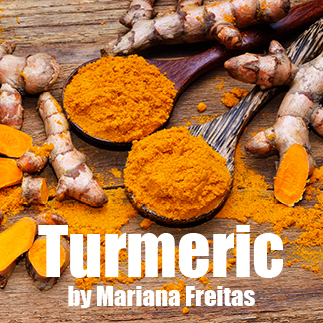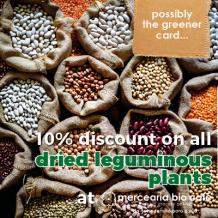Turmeric

The Curcuma Longa Linn is a plant belonging to the species Zingiberaceae. It is popularly known as "turmeric" in English-speaking countries. It is also known as "jiang huang" in eastern countries, like China, and as "haldi" in Pakistan. In Brazil, its popular denominations are "curcuma", "saffron", "golden ginger", saffron of the earth and sun root.
The part of the plant commonly used is the root / rhizome. It is used as a food colouring, seasoning or food flavouring. It has a strong yet pleasant smell and has a spicy and aromatic flavour.
Its orange colour comes from the presence of phenolic compounds called curcuminoids. Curcumin is the main curcuminoid found in curcuma (75%) hence, in general, it is considered its active compound.
What are its benefits?
It has several pharmacological activities, highlighting as its main therapeutic potential the anti-inflammatory, antiviral, anti-bactericidal, anti-oxidant, antifungal and anti-carcinogenic activities.
It is used in the treatment of osteoarthritis, presenting anti-inflammatory and antioxidant action. Additionally, the effects of turmeric for treatment of gastrointestinal disorders, such as dyspepsia and flatulence, treatment of dermatological disorders (eczema and acne), wound healing and analgesic effects were highlighted.
Studies have indicated that curcumin has neuroprotective effects in the treatment of Alzheimer's and Parkinson's Disease, preventing inflammation and oxidative damage
Contraindications
• Individuals with allergy to curcumin (active principle) and Curcuma longa;
• Whoever takes medication that changes coagulation characteristics such as antiplatelet agents, anticoagulants, low molecular weight heparin and thrombolytic agents, as there may be an increased risk of bleeding;
• Anyone who is at risk of obstruction of biliary tract or who has gallstones,
• Children;
• Pregnant, since turmeric is described as a hormonal stimulant and may induce abortion;
• Infants;
• people with gastric ulcers and hyperacidity of the stomach.
There is no safety data regarding its use in patients with hepatic and / or renal impairment, and its use in people with such conditions is not recommended.
The consumption of high doses of turmeric can significantly increase urinary oxalate levels, thus increasing the risk of kidney stone formation in susceptible individuals.
How to cook?
This root can be used in powder or whole and can be added, in moderate amounts, due to its intense flavour, to soups, recipes with beans and vegetables, desserts, being specially fit for rice and fish dishes.
When using turmeric in your steaks, always include black pepper to get the most benefits from this root. Pepper has a substance called piperine that greatly increases the bioavailability of curcumin.
My suggestion ...
Cauliflower rice with turmeric
Ingredients
- 1 cauliflower;
- 2 garlic cloves;
- 1 dessert spoon of olive oil;
- 1/4 cup of water;
- 1 coffee spoon of turmeric powder;
- Black pepper q.s.;
- Salt q.s.
Method of preparation
In a frying pan place the olive oil, the garlic cloves and let it cook till it becomes golden. Add the grated cauliflower, the salt and mix. Then add the water, put a lid on and cook for three minutes. Add turmeric and black pepper, and cook for another minute.

green card - dried leguminous plants
For the Mercearia Bio Green Card hol...
Read article



